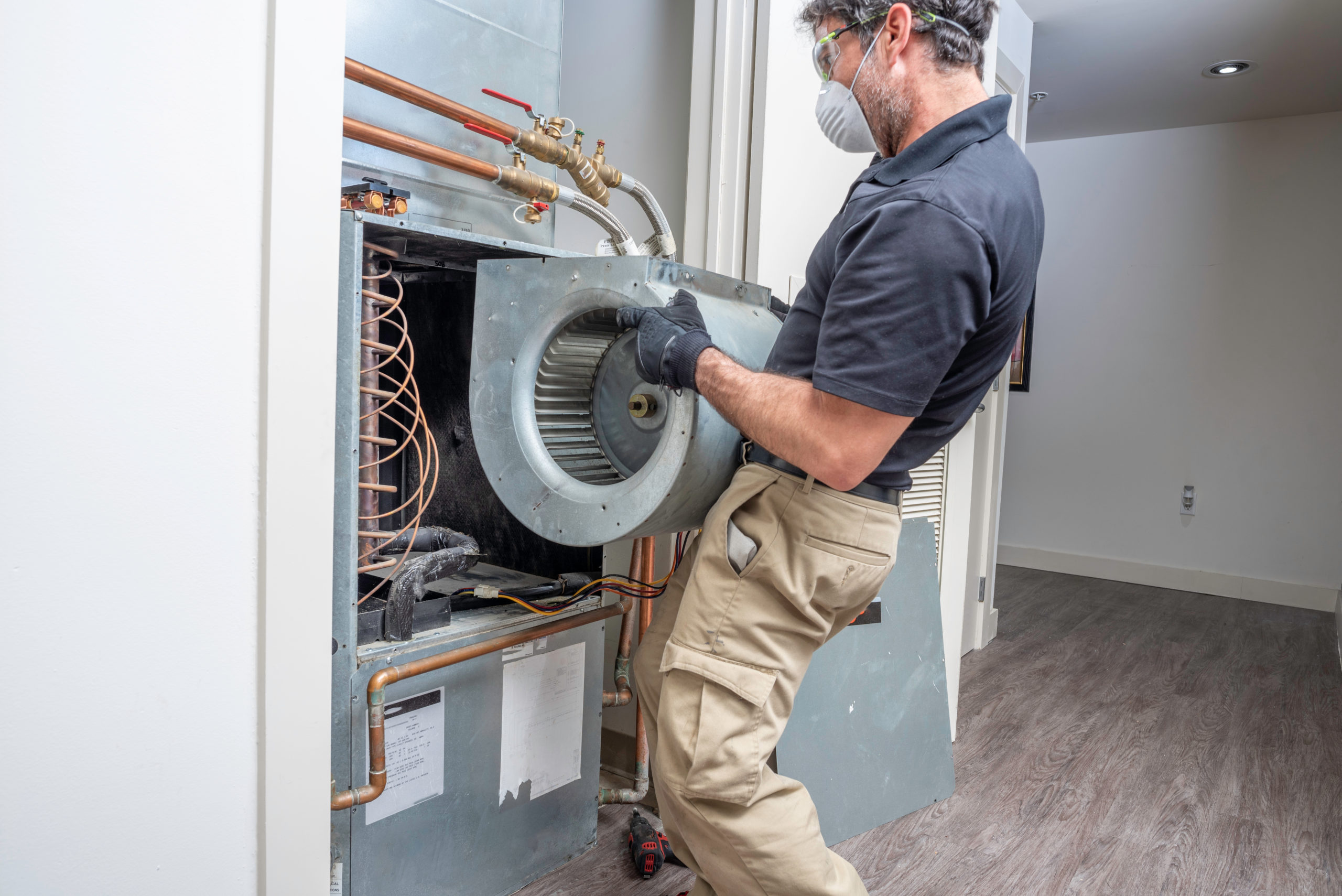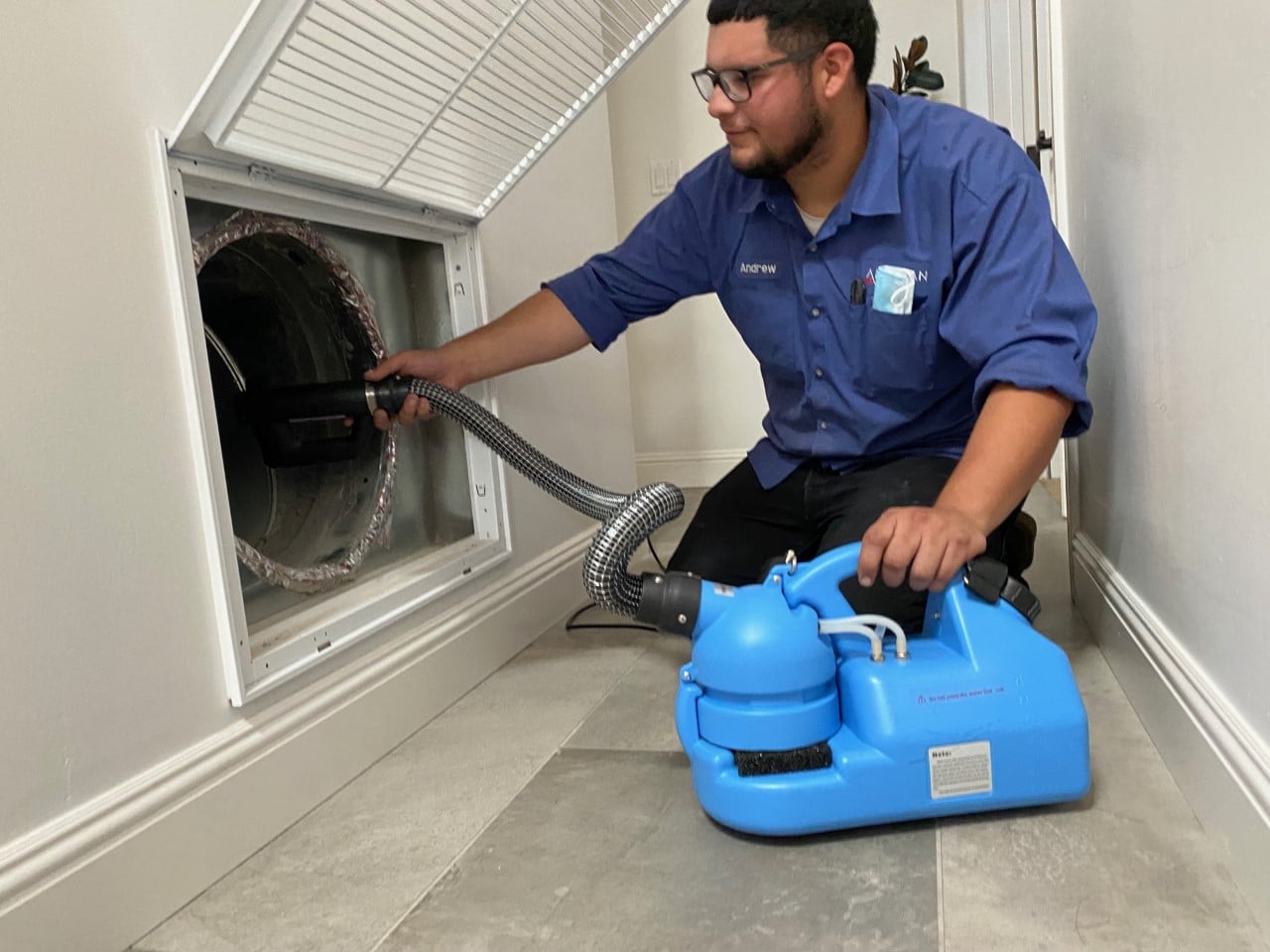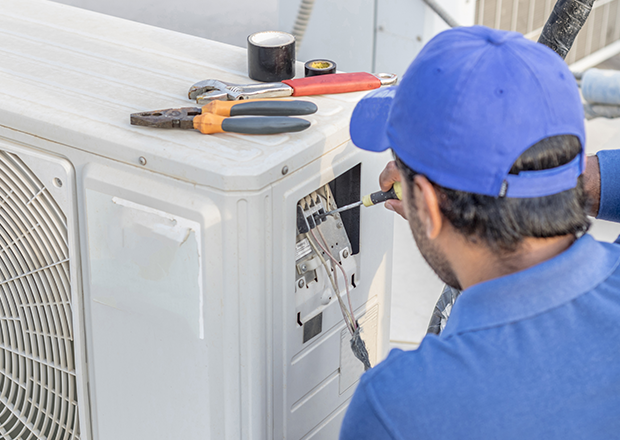Top benefits homeowners hire an HVAC contractor for seasonal maintenance
All Concerning Cooling And Heating: Identifying Common Issues and Effective A/c Repair Service Techniques
Cooling and heating systems are critical for keeping interior comfort. Understanding their parts and capability is necessary for determining common problems. House owners typically encounter issues such as inadequate air conditioning, unusual odors, or rising power expenses. These signs can show underlying problems that may need attention. Discovering DIY troubleshooting methods can be valuable, yet understanding when to look for expert help is just as essential. What actions can be taken to guarantee durable performance?
Recognizing Your Cooling And Heating System: Parts and Performance
A heating and cooling system, often thought about the backbone of indoor environment control, contains a number of essential parts that collaborate to regulate temperature and air top quality. The primary aspects consist of the heating device, ventilation system, and a/c system. The home heating unit, typically a heating system or central heating boiler, generates warmth during cooler months, while the air conditioning system cools down interior spaces throughout the summer season.

Common A/c Problems Home Owners Encounter
House owners frequently encounter numerous typical cooling and heating issues, consisting of inconsistent temperature circulation throughout their living areas. In addition, unusual noises throughout operation can suggest underlying concerns that require interest. Addressing these worries immediately is necessary for keeping ideal system efficiency.
Inconsistent Temperature Circulation
Many homes experience the irritating issue of irregular temperature level distribution, where specific spaces really feel annoyingly warm while others stay as well cool. This issue often occurs from a range of variables, consisting of poor insulation, blocked vents, or an incorrectly sized a/c system. When air ducts are not sufficiently sealed or when furnishings blocks airflow, some rooms might get inadequate air conditioning. In addition, thermostat positioning can greatly impact temperature policy; a thermostat located in a sunlit area may misstate the total temperature level of the house. Normal upkeep, consisting of cleaning filters and ensuring ductwork is clear, can help reduce these discrepancies. House owners might additionally think about zoning systems to much better control temperatures throughout different locations of the home, advertising a much more comfy living atmosphere.
Unusual Noises During Procedure
When a cooling and heating system operates, unusual noises can show underlying concerns that require attention. Homeowners might experience a variety of sounds, such as grinding, squealing, or hissing. Grinding noises commonly indicate damaged bearings or parts, while squeaking can suggest loosened belts or parts needing lubrication. Hissing might suggest a refrigerant leakage, which can endanger the system's effectiveness. Additionally, banging audios may indicate loosened ductwork or a problem with the blower fan. Each of these sounds functions as a warning, motivating home owners to investigate even more. Disregarding these signs can cause more substantial problems and costly repairs. Routine maintenance and punctual focus to unusual sounds can improve system durability and efficiency, making sure a comfortable living atmosphere.
Signs That Indicate Your Air Conditioner Requirements Fixing
How can one tell if their cooling system needs repair work? Numerous signs might show underlying problems calling for specialist interest. First, if the air conditioner fails to cool the room effectively, it may recommend a cooling agent leak or compressor breakdown. Furthermore, an increase in power costs without matching usage changes might indicate inadequacy in the system. Homeowners should also be alert to unusual smells originating from the system, which can show mold and mildew growth or electric issues. If the Air conditioner regularly cycles on and off, it could be a sign of a defective thermostat or other mechanical problems. The visibility of water pooling around the system can indicate a clogged drain line. Identifying these indicators early can conserve money and time, making certain that the cooling system runs effectively and efficiently.
DIY Troubleshooting Techniques for HVAC Issues
When facing HVAC concerns, house owners can use a number of DIY fixing methods to determine the issue. Key approaches consist of checking thermostat setups, checking air filters, and assessing water drainage problems. These steps can help determine usual malfunctions before seeking specialist support.
Checking Thermostat Setups
What steps should homeowners require to ensure their thermostat setups are correct? They should validate the thermostat is set to the preferred temperature and setting, whether home heating or cooling. Examining for a clear screen and validating the thermostat is not set to "hold" or "trip" mode is vital. Homeowners must also confirm that the thermostat is level and set up in a location devoid of drafts, straight sunlight, or various other temperature level influences. Furthermore, rectifying the thermostat can help give exact analyses. If the thermostat runs on batteries, replacing them may settle any problems. By methodically assessing these variables, property owners can commonly recognize and correct thermostat-related issues, promoting suitable heating and cooling system efficiency.
Inspecting Air Filters
Air filters play an essential function in keeping ideal HVAC performance. They trap dust, allergens, and other fragments, ensuring clean air blood circulation. Over time, filters can become clogged up, decreasing air movement and effectiveness. To inspect air filters, people must first situate the filter, typically found in the return duct or near the heater. As soon as located, they should evaluate the filter's condition-- if it shows up unclean or blemished, it most likely demands substitute. A lot of filters websites need changing every 1-3 months, depending on use and ecological factors. Regular inspection and timely replacement of air filters not only enhance air quality but also prolong the life-span of heating and cooling systems, avoiding prospective malfunctions and pricey repair work.
Evaluating Water Drainage Issues
Exactly how can house owners properly determine and deal with drainage problems within their heating and cooling systems? First, they need to inspect the condensate drainpipe line for blockages or blockages, which can bring about water build-up. Homeowners may use a wet/dry vacuum cleaner to remove any particles obstructing the line. Next off, checking the drainpipe pan for corrosion or leaks is essential, as a harmed pan can create water to overflow. Regular cleansing of the drain line with a combination of vinegar and water assists protect against future blockages. Additionally, making sure proper incline of the drain line advertises effective water circulation. If these do it yourself methods do not resolve the problem, speaking with a specialist HVAC professional might be necessary to avoid prospective water damages and system failure.
When to Call a Professional for Air Conditioner Repairs

While some a/c concerns can be handled through DIY methods, there are situations where calling a professional ends up being vital. Home owners should look for experienced aid when they encounter persistent problems, such as insufficient air conditioning, weird sounds, or uncommon smells originating from the unit. These signs and symptoms may show much deeper issues that require specialized expertise and tools to identify and repair properly.

Preventative Upkeep Tips for Cooling And Heating Long Life
Normal preventative upkeep can substantially boost the long life of cooling and heating systems. Home owners need to schedule annual inspections by qualified technicians to assess system efficiency and recognize prospective problems. Frequently altering or cleaning air filters is important, as this guarantees proper air movement and minimizes stress on the system. Furthermore, examining and securing ductwork stops energy loss and improves overall efficiency.
It is additionally suggested to maintain the outdoor system free from particles and plant life, permitting for peak air flow and heat exchange. Homeowners need to check the condensate drain for clogs to prevent water damage and mold and mildew growth. In addition, preserving suitable thermostat setups and utilizing programmable options can boost energy performance. Documenting maintenance activities assists track solution background and can aid in determining recurring problems. By adhering to these preventative measures, individuals can optimize the efficiency and life-span of their HVAC systems
Often Asked Inquiries
Exactly how Usually Should I Replace My Cooling And Heating System Filters?
Cooling and heating system filters need to normally be changed every one to three months, depending on usage, filter type, and environmental variables. Routine replacement aids keep efficiency and air high quality, making sure peak system efficiency throughout the year.
What Size A/c System Do I Need for My Home?
To figure out the proper heating and cooling system size for a home, one must consider square footage, insulation top quality, and neighborhood environment. Consulting a specialist can assist guarantee optimal effectiveness and comfort my company for the specific living room.
Exist Eco-Friendly Heating And Cooling Options Available?
Yes, environmentally friendly HVAC alternatives are available, including energy-efficient heatpump, solar-powered systems, and geothermal heating. These alternatives lower energy consumption and ecological effect, advertising sustainability while preserving effective environment control for domestic and commercial rooms.
Just How Can I Boost My a/c System's Energy Efficiency?
To boost cooling and heating power effectiveness, one can on a regular basis preserve the system, seal air leaks, mount programmable thermostats, utilize energy-efficient filters, and assurance appropriate insulation throughout the home to lower power usage and enhance efficiency.

What Is the Ordinary Life-span of a HVAC System?
The average life-span of a cooling and heating system generally ranges from 15 to 25 years, relying on variables such as upkeep, use, and the top quality of setup. Normal maintenance can greatly extend its operational durability.
Verdict
In recap, a thorough understanding of heating and cooling systems equips house owners to recognize usual concerns and address small troubles effectively. Recognizing signs of malfunction, employing DIY troubleshooting techniques, and prioritizing regular maintenance can enhance system performance and effectiveness. Nevertheless, when faced with complicated repair work, enlisting professional help is essential to guarantee safety and long life. By cultivating understanding and aggressive care, people can take pleasure in a comfy indoor environment while minimizing unexpected prices connected with HVAC failings.